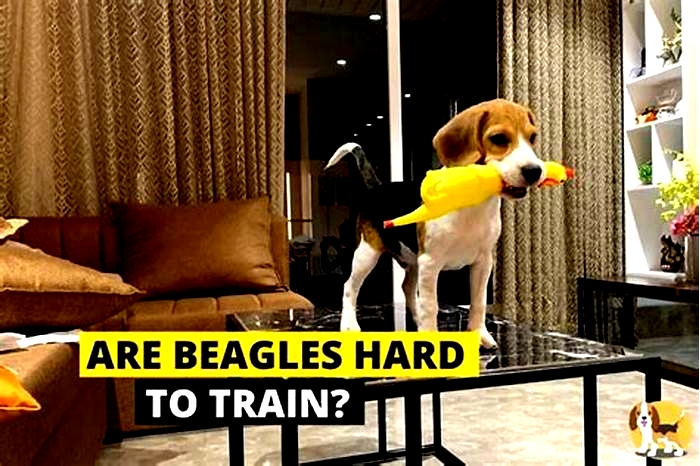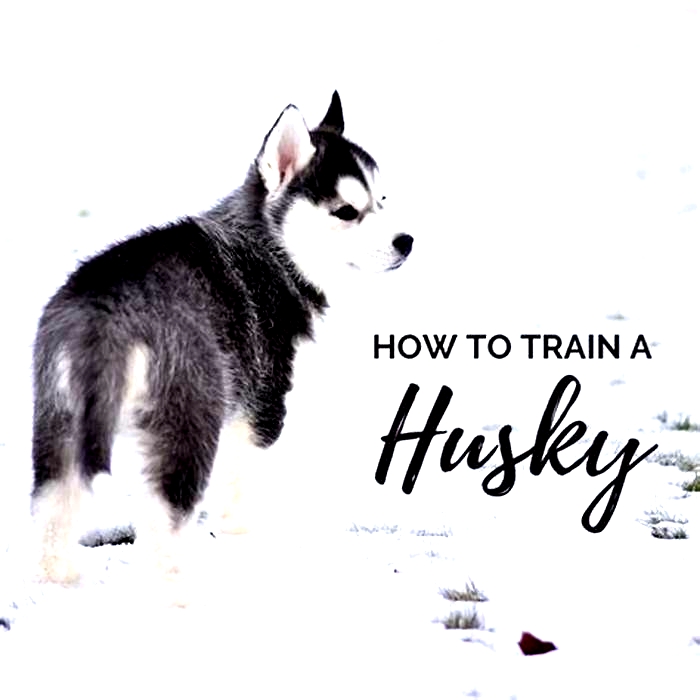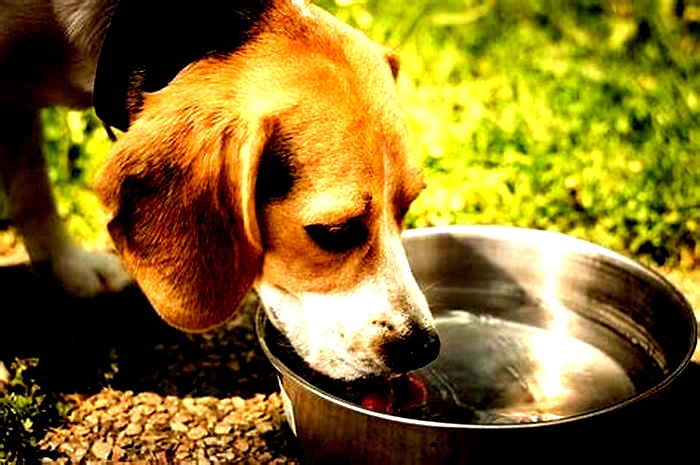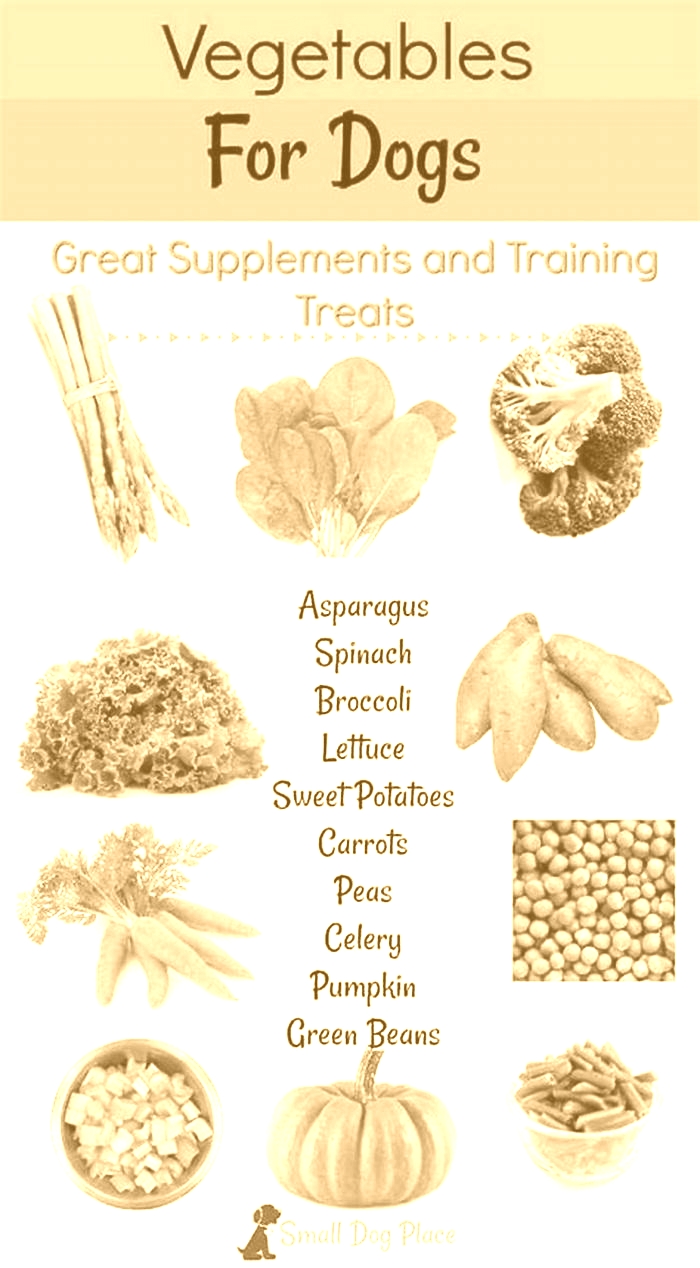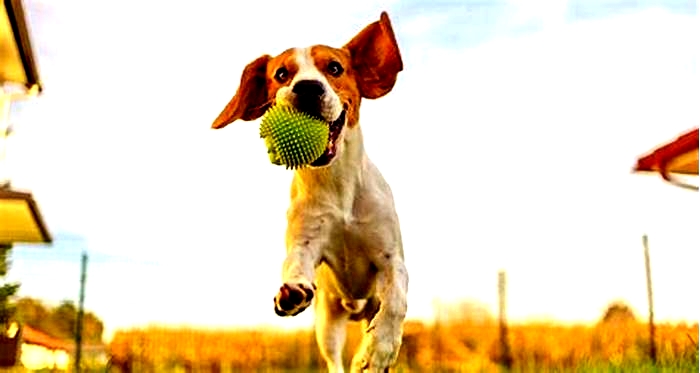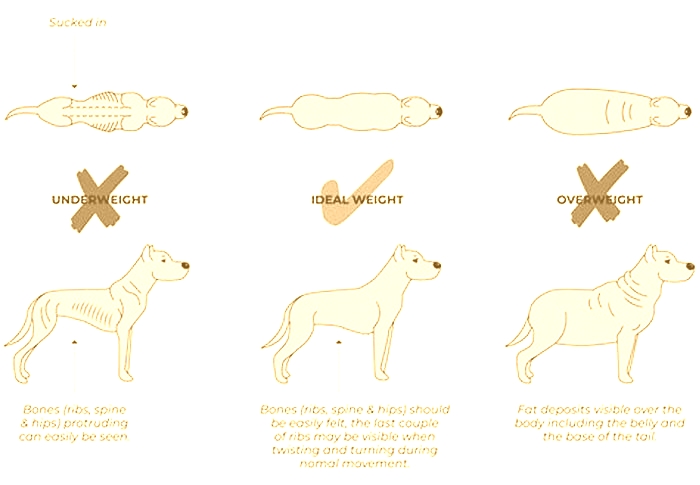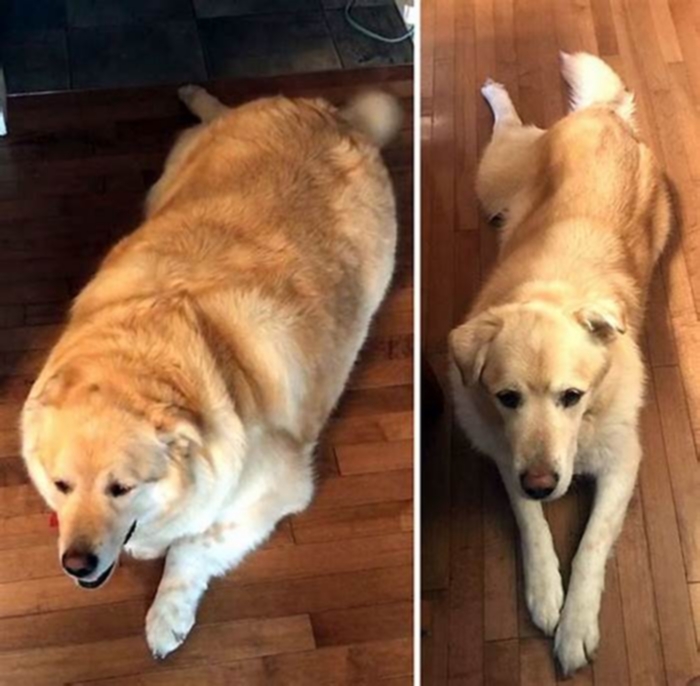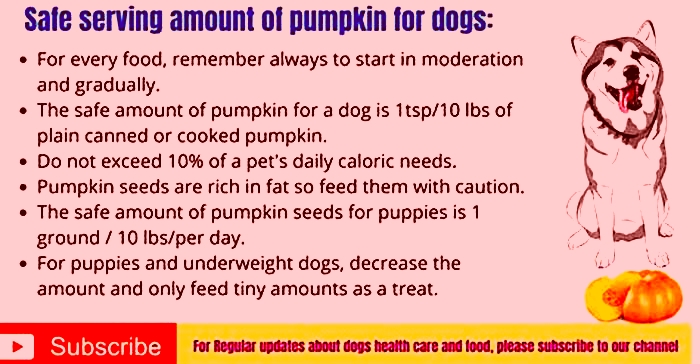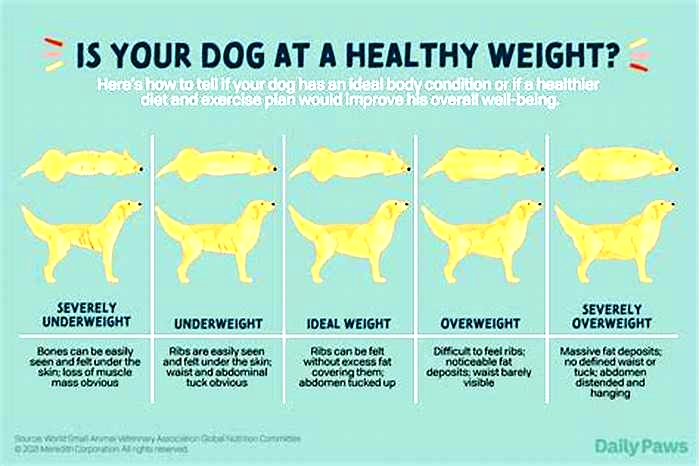Why is it so hard for dogs to lose weight
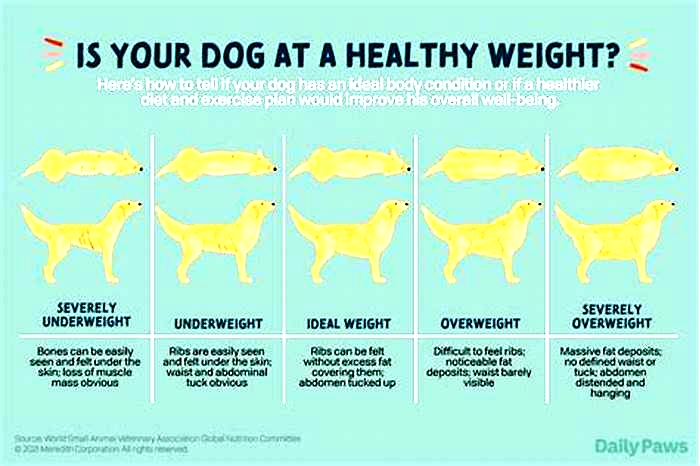
How to Help Your Dog Lose Weight
This Is a Paid Advertisement for The Farmers Dog
In the U.S., 56% of dogs are overweight or obese, and that excess weight is tied to an astonishing array of health problems. When it comes to preventing dog obesity, or even the slow creep of excess pounds, simple awarenessknowing what your dogs weight should be, and keeping on top of any fluctuationsis the first step. Just a few pounds can make a big difference.
You can seek your vets counsel on your dogs ideal weight, but a quick way to assess good canine condition at home is to ask:
- Does your dog have an hourglass shape when you stand behind them and look at them from above?
- Do they have a waist?
- Can you easily feel their ribs?
If youre answering no for all three, theres a good chance your dog needs to lose weight. Now what? Here are some vet-approved tips for helping your dog safely shed excess pounds and keeping them in good condition.
The Food Factor
For dogs, as for humans, losing weight really comes down to two things: food and exercise. And for a dog owner trying to manage or reduce their dogs weight, food is most important by far.
Weight loss begins and ends at the food bowl for dogs and cats, Ernie Ward, DVM, and founder of the Association for Pet Obesity Prevention (APOP), tells us. Weight loss for humans and dogs is 60-70% diet and 30-40% exercise.
For dog owners who have active lifestyles, its easy to overestimate the impact of physical activity on weight maintenance. So even for active dogs, its important to establish clear guidelines for daily caloric intake.
Get Specific With How Much Youre Feeding
Heres where things can go sideways. Humans may or may not choose to count calories as a guide for what theyre eating, with some opting for other methods of keeping to a healthy regime (Do my pants fit? Great!). But when it comes to the long-term management of your dogs weight, its essential to establish a concrete benchmark for how much to feed. This means determining the number of calories your dog needs every day.


Its not a good idea to rely on the feeding guidelines on the average pet food package. There are many factors that will influence your dogs dietary needs, including breed, size, activity level, and whether theyre spayed or neutered. Standard kibble-bag feeding ranges are generally too broad for your dog, and many owners end up over-feeding based on too-generous and too-vague suggested portion sizes, typically measured in cups and scoops.
The feeding guidelines on pet food packages, says Ward, are based on active adult dogs for all life stages. Spaying or neutering, for example, reduces energy requirement by 20 to 30%, he says. So, if your pet is spayed or neutered, and not particularly active, you can already be overfeeding by 20 or 30% or more.
When it comes to determining the ideal caloric intake, its important to consider a number of factors. We take a couple of things into considerationwe look at body condition score, we look at muscle condition score, we look at lifestyle, and any concurrent medical conditions, Dr. Ward says. We start by determining, OK, how many calories should you be feeding?
As a starting place, there are also many tools online to provide rough feeding guidelines based on weight and breed. You might start by consulting the guide published by the Association for Pet Obesity Prevention.
For at-home calculating, you can use the Resting Energy Requirement (RER) formula. Take your dogs weight in kilograms, multiply by 30, and add 70 (or, take their weight in pounds, divide by 2.2, multiply this figure by 30, and add 70). You can then factor in a metabolic energy requirement (MER), depending on things like health and whether theyre spayed or neutered.
Typical MER factors include:
- Weight loss1.0 x RER
- Neutered/ Spayed Adult1.6 x RER
- Intact Adult1.8. x RER
Ask your veterinarian about the MER and calculating and determining how your dog can lose weight safely. Tools like the MER multiplier table on the web provide estimates, but every dogs metabolism is different, so be sure to keep monitoring your pets weight.
You can also sign up for a fresh-food plan (like the ones offered to customers of The Farmers Dog). A plan like this makes it easy to determine the correct total caloric intake and food portions based on your dogs very specific requirements, and also makes it easy to adjust daily calories based on changing weight-management needs.
Food Quality Is Also Key
In addition to calorie counting, another important part of weight maintenance or weight loss is feeding lower-carb, whole, fresh food.
Many ultra-processed dog foods are full of carb-based fillersas Dr. Ward has noted, when you actually break down the ingredients on the label, many of them top out at over 60% or more carbohydrates. Fresh diets provide quality protein, but also the fiber and moisture that can keep your dog satisfied, without carb-y fillers.
Feeding nutrient-dense, bioavailable food will keep your dog healthy as they reduce their overall intake of food.
Treats Count, So Count Them
Another way to help your dog drop some extra weight is by controlling, and possibly reducing, their treat intake. Here, again, quality and quantity matter.
Nobody wants to deny their dog treats, as they are often helpful training aids, and its fun to see the excitement they generate. But its important to keep a close eye on how many treats your dog actually eats in a day and what their caloric impact is. Treats should be factored into, and comprise no more than, 10% of total daily calories.
Dog owners who feed their dogs healthy food, yet still feed them highly processed, high-carb, high-calorie treats, are potentially missing a big source of weight gain and health issues. And if you feed your dog too many treats (more than 10% of their daily intake of food), you can undo the benefits of the balanced diet youre feeding.
Many vets recommend using single-ingredient treats like fresh veggies and fruit. Baby carrots, celery, broccoli, green beans, cucumbers, blueberries, apples, and bananas all make healthy treats and, unlike mystery-meat treats, can contribute to your dogs health (use apple and banana in smaller amounts due to higher sugar content).
As for peanut butter, make sure its truly a special (rare) treat, and doled out in limited amounts; this dogand humanfavorite has a hefty 100 calories per tablespoon. Also, ensure that the peanut butter youre using doesnt contain Xylitol, which is toxic to dogs. For a lighter, and perhaps better, substitute, try plain canned pumpkin, which weighs in at just five calories per tablespoon.
Its also worth stepping back and considering why youre giving your dog treats. Our bond with our dogs is so special, and every dog owner wants to see the happy excitement a treat brings. But you can get that joyful response with healthy treats, or with smaller portions. I typically tell owners that dogs get the same enjoyment, and you can get the same reaction, from a small piece of a treat as you can from the whole thing or a handful, says Alex Schechter, DVM. There are many ways to show love and bond with your pet. It doesnt have to be all about food.
Safely Increase Exercise
Food is key, but no weight loss plan, or health maintenance plan, is complete without exercise. The most obvious, and important, activity for your dog is walking. Regular walks dont just exercise your dogs body; they provide crucial mental stimulation and that all-important opportunity to sniff. The amount of walking your dog needs, or wants, depends on their breed and general health. But while conventional wisdom says that some dogs need less exercise than others, all dogs need to move.
While the recommended minimum of daily exercise is 20 minutes, twice a day, many dogs will need much more. For many breeds, an hour of exercise a day is a good target. If your dog needs to lose weight, try to increase the amount of exercise they currently do. So, if thats none, or barely any, start with short intervals of walking. If youre already exercising, try lengthening your walk or other activity by 10-20%.
Ask your vet about the best types of activities based on your pets breed, age, gender, and current physical condition. Introduce new activities slowly to avoid injury. And, unless your dog has been trained for or slowly introduced to these kinds of activities, leave the extreme sports to your own weekend hourstoo-vigorous, or repetitive activity can put your dog at risk of joint problems. Also, keep weather conditionslike high sunin mind if your activities are outdoors. The sun creates the potential for heat stroke and burnt paw pads.
Rule Out a Medical Condition
If youve established and are staying within caloric boundaries and youre still not having any luck helping your dog lose weight, a visit to the vet could be in order to rule out a medical condition. Weight gain and lethargy can be symptoms of conditions like hypothyroidism and Cushings syndrome. The latter, also known as hyperadrenocorticism, usually occurs in older dogs, and can also cause frequent urination, hair loss, and weakness.
Weight Loss (and Maintenance) Is a Long Game
If you determine that youre overfeeding, work with your veterinarian to create a weight-loss schedule based on the appropriate calories so that your dog doesnt lose weight too fast, which is unhealthy.
Overall, the best weight management strategy is to develop good habits that are applied, consistently, long-term.
People (humans) want to rush weight loss, says Dr. Ward. Thirty days to bikini season! But this is a long process. Its years of making small decisions that help. When youre deciding on sharing your pizza crust with your Pomeranian, if you do it once, OK. But if you do it once a week for five years, thats a problem.
This article was vetted by a vet. Reviewed by Alex Schechter, DVM, founding veterinarian atBurrwood Veterinary.He was previously founding veterinarian atPure Paws Veterinary Care.
How Can I Get My Dog to Lose Weight?
Image via iStock.com/o_sa
By Dr. Sarah Wooten
Have you been frustrated because your dog doesnt lose weight, no matter what you do? Obesity in dogs is one of the biggest health concerns that veterinarians and pet guardians battle.
Sometimes, when it comes to weight loss for dogs, the answer is easy: reduce calories, increase exercise, and BOOMthe pounds come off. Other times, it isnt so simple.
If you have had your dog on the diet train and nothing is moving, try these five veterinarian-approved recommendations to tip the scales back toward a healthy weight.
Be Religious About Daily Calorie Limits
If you want to help a dog lose weight, then there are two non-negotiables that are necessary for success: you must have a daily calorie limit that has been calculated, and you must stay under that number.
A cheat day every now and then is okay, but in order to get the fat to burn away, the ins must be less than the outs, and the total daily calorie count matters. This is especially true for small dogseven an extra kibble or two every day or will add up to unhealthy weight.
Not sure what your dogs daily calorie limit should be? The easiest way is to ask your veterinarianmany vets are happy to calculate this number for you. They can also tell you what your dogs ideal weight goal is.
You can also visit Pet Nutrition Alliance and use their online calculator to calculate the calories. Once you have this number, then you will need to divide it by the kcal/cup number that is on your dog food bag. This will be on the back, in the AAFCO nutritional statement. If you cant find it, ask your veterinarian or veterinary technician for helpthey can point it out to you.
Once you divide the total daily calories by the kcal/cup, that will give you the number of 8-ounce cups of food to feed per day. If there is a decimal, round down to the closest measurable number, such as , or . If you feed treats, make sure to include those in the total daily calorie count as well!
No More Doggy Dishwasher
One overlooked source of excessive calories is people food. Yes, feeding dog treats and sharing food is an important part of the bond you share with your dog, but your heartwarming goodies might be sabotaging your weight-loss efforts.
If you feed any people food, include it in the daily calorie count. Dont forget to add calories consumed from licking plates clean! Many people let their dogs lick their plates after they finish eating or while they sit in the dishwasher, but this is where sneaky calories hide, even in BBQ sauce remnants.
Either stop letting your dog wash the dishes, or include it in the daily calorie count.
Super Sleuth Serial Food Sneaking
Do you have kids? Do they drop food? Does your dog snarf up crumbs? This could be a source of excess calories. Do you have grandparents that drop by with dog biscuitsin their pocket? This is also a source of excess calories.
Do you have multiple pets? Is your pup finishing other pets food? This is another source of excess calories.
You may have to do a little sleuthing to see if somebody is secretly feeding your dog extra food or if your dog is a serial food sneaker. People are often surprised at how far their enterprising pooches will go to find food.
It can be challenging to stick to the total daily calorie count when there are multiple people or children feeding one dog. Have a family meeting, decide who is going to feed the dog, and get everyone to agree to not feed extra.
The best practice is to set out what your dog will eat for the day in baggies, and when it is gone for the day, it is gone. No. More. Food.
Utilize a Therapeutic Diet
Food technology has come a long way, especially when it comes to therapeutic diets. In particular, Hills Prescription Diet metabolic weight management dog food has been a miracle product for many dogs that arent losing weight.
If the needle wont budge even though you have cut back calories and increased exercise, try feeding a therapeutic weight control dog food, like Metabolic diet, instead of your dogs regular maintenance diet.
There are ingredients, like L-carnitine, that help ramp up fat burning, and the food still delivers a complete and balanced diet even though calories are restricted. The same cannot be said for feeding restricted amounts of regular dog food.
Have Your Dogs Hormones Checked
Most dogs should be able to reach their weight-loss goals within three to six months.
If you have followed all of these instructions and been religious about the weight-loss program and still arent seeing results, then maybe your dogs hormones are to blame. Just like people, dogs can have hormonal imbalances that lead to weight gain and having difficulty losing weight.
Conditions like Cushings syndrome (hyperadrenocorticism) in dogs and a sluggish thyroid are common hormonal problems that will make it difficult for a dog to lose weight. If you are several months into the weight-loss program and are not seeing results, then schedule an appointment with your veterinarian and ask to have your dogs hormones checked.
If your dog has one of these hormonal problems, prescription pet medicationis available to correct the condition and get your dog back on track to a healthy lifestyle.
Follow these veterinarian-recommended tips, and you should see success with your dogs weight loss.

